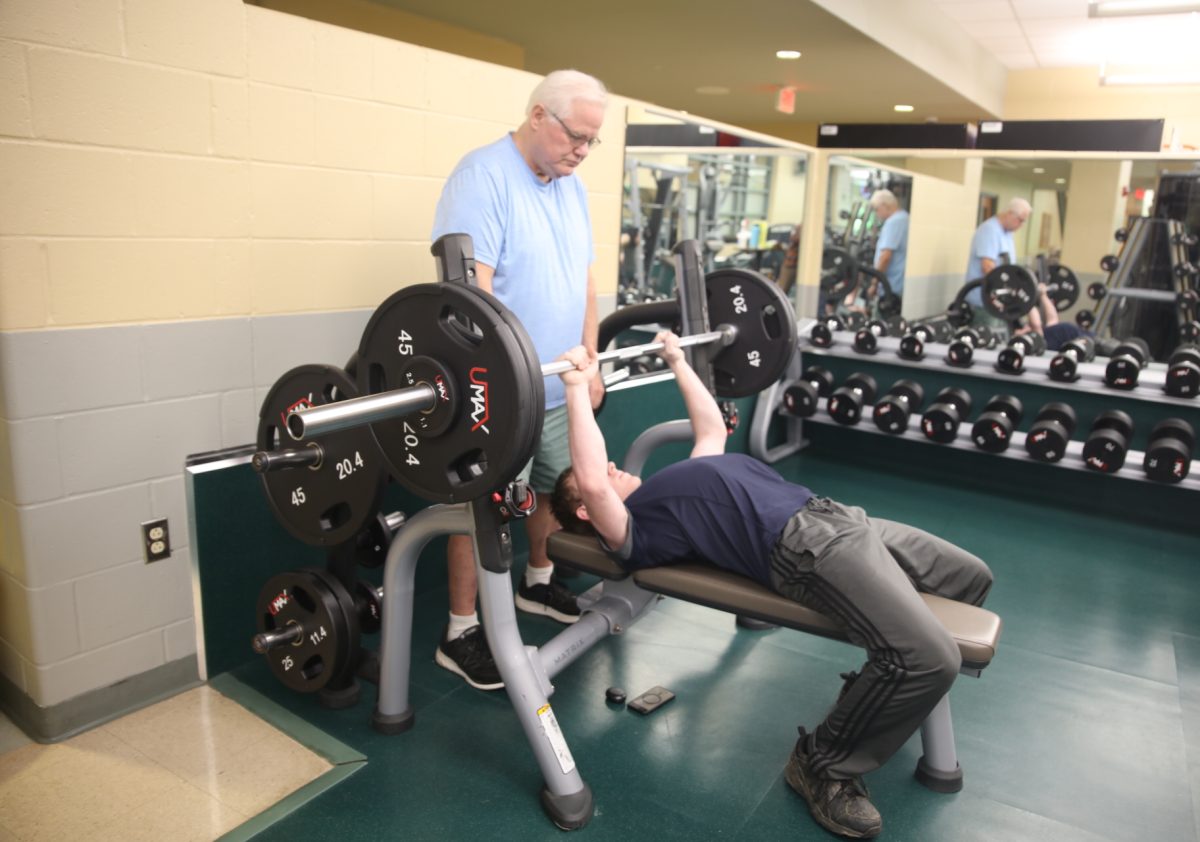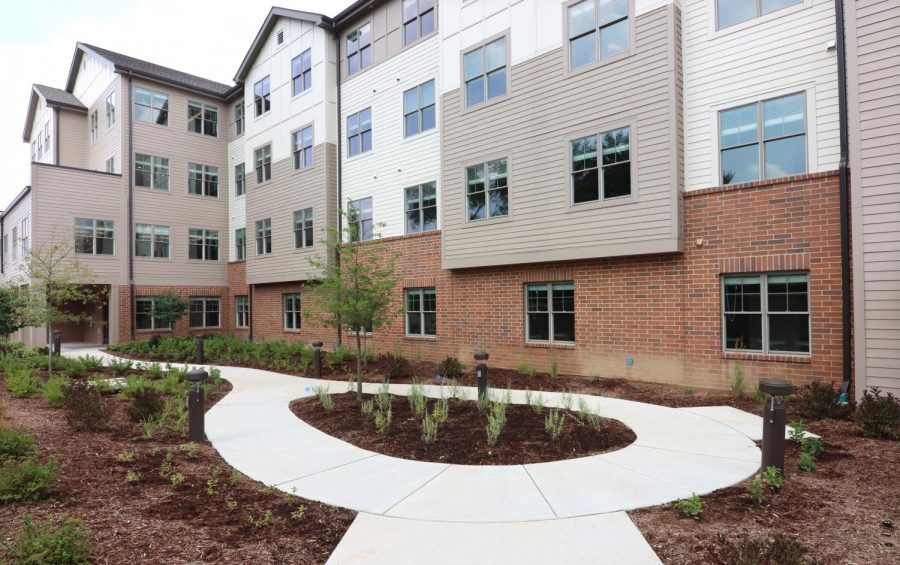A recent study shows Mehlville School District enrollment is expected to remain stable over the next 10 years.
Regional geodemographic statistician Charles Kofron estimates the school district’s resident enrollment will fall slightly from its 2008-2009 level of 9,808 pupils to an estimated 9,597 pupils by the 2018-2019 school year — a projected enrollment decrease of 2 percent.
By year, the district’s resident enrollment is projected to be 9,795 in 2009-2010; 9,685 in 2010-2011; 9,670 in 2011-2012; 9,727 in 2012-2013; 9,727 in 2013-2014; 9,682 in 2014-2015; 9,684 in 2015-2016; 9,703 in 2016-2017; 9,674 in 2017-2018; and 9,597 in 2018-2019.
Kofron recently presented these figures to the Board of Education, telling members they should expect a “stable” enrollment for the next 10 years.
“Instead of a declining or a negative cast to the enrollment picture, we’re really showing a stable enrollment picture,” Kofron said. “… The resident enrollment in the district is stable. And it’s going to remain stable for the next 10 years. Based on your class sizes and what you have in your system right now, I would bet my last nickel that your enrollments are going to remain kind of where they’re at.”
Mehlville’s estimated stable enrollment is due to a number of factors. While the district’s enrollment is down from previous years, Kofron believes the largest decreases already have occurred.
“A series of estimates and projections are showing a slow rate of growth in the district, about 1 percent,” Kofron told the board Nov. 20. “The school-age population is projected to decline. And most of the decline has already occurred based on these estimates and projections. It occurred between 2000 and 2007. And we’re not expecting that much more of a decline between 2007 and 2012. So most of the decline has already occurred.
“Annual number of births have declined, but basically they’ve hit a plateau. It looks like the last three or four years, we’re at a stable number of births that are occurring in the district.”
Kofron said the district’s stable population also can be attributed to lower rates of property turnover since 2004.
“The rate of owner property turnover has been declining,” he said. “We saw much larger turnover between 2001 and 2004 than we did between 2004 and 2007. But we also saw that, I think in a very dramatic way, the overall tax assessments for the district have gone up dramatically between 2004 and 2007 when compared to 2001 to 2004. This indicates the district is maturing. The housing and the property is increasing in value because now we have more developments that are under way and people living in them.”
At the same time, Kofron said nothing appears to be on the horizon to indicate that Mehlville will see a large population burst in the next 10 years.
He also discussed with board members that Mehlville faces some unique challenges with its dynamic of private and parochial schools within the district.
Kofron estimates that while two-thirds of district children attend Mehlville School District schools, “the other third is serviced by private, parochial schools. And that’s an extremely high rate.”
“What strikes me about Lindbergh and also Mehlville, and I think they’re very similar in a lot of respects, is that both have large numbers of households that send their kids off to private, parochial schools,” Kofron said. “Your birth trends, your birth series, I’m seeing in some districts like Clayton and Ladue, there’s a greater correspondence between the numbers of births that happen and the number of kids that attend kindergarten. In Clayton, the percentage is up close to 80, 85 percent.
“In Mehlville’s case, I think we’re down in the 60s between 60 and 70.”
Kofron also cautioned board members that should some private or parochial schools close, the district would be faced with an influx of new enrollment rather than a slight, stable decrease.
When asked by board member Karl Frank Jr. if some private schools’ rising tuition might have an effect on the Mehlville School District, Kofron said the district could find itself with more pupils.
“A number of school districts have been experiencing increases in the number of kids because two things are happening. On the one hand, people are rethinking private and parochial education because public schools are getting better. Quite frankly, the opportunities, the curriculum, just the life experiences that are available in public schools are now providing a better opportunity for our kids to grow. And more services are available for kids that either have educational, behavioral issues or things that private and parochial schools can’t address.
“The second thing is that there’s this aura of sending kids to private schools and there is this aura of education that a lot of households and parents seem to attach status and standing in the community to. What school did you go to? Well, if I said Chaminade or Priory or if I said Lutheran South, they all seem to carry that: ‘Wow, that’s private school. I must have had money …’ Whereas on the other hand, if I answered: ‘Well, I went to Normandy or Wellston,’ it’s ‘Really?’ In St. Louis, that’s how we associate with folks. You ask them where they went to high school.
“But I think that’s changing. And I think that’s got to do with the fact that more and more high schools are seeing more of their graduates go to college. There are more tangible measures of success that are out there that we’re seeing that private and parochial schools are having a hard time matching …
“And the tuition that’s being paid … it becomes prohibitively expensive. So they could absolutely impact your enrollments down the road. And since you have such a large market out there that goes to private and parochial schools, it could happen.”
Kofron added that like most south county school districts, Mehlville’s enrollment is expected to remain stable.
“You’re not growing as much as Hazelwood is,” Kofron said. “Bayless is growing, but it’s small. And it’s growing primarily, and Affton is growing as well, primarily because of the Bosnian population and that movement into that district.
“So where do you stand? Generally speaking, the north county school districts are increasing. The west county school districts are kind of staying the same, and so are you. You’re a lot like Parkway Central, I would say if I were to make a comparison. However, the challenges that you have are quite different from Parkway Central because they don’t have the parochial-school population that you do.
“But if they were to decide at one point that they’re going to eliminate Lutheran South and the Lutheran schools and possibly the Catholic schools, you would have a real issue and you’d probably be tracking a lot higher.”








